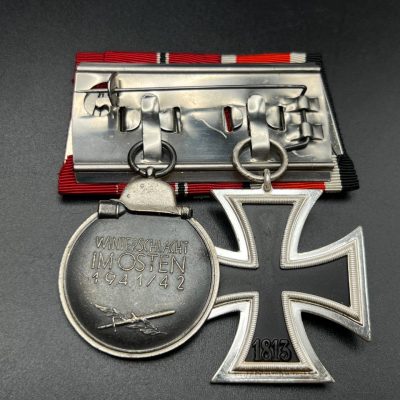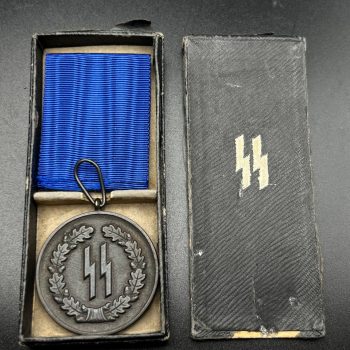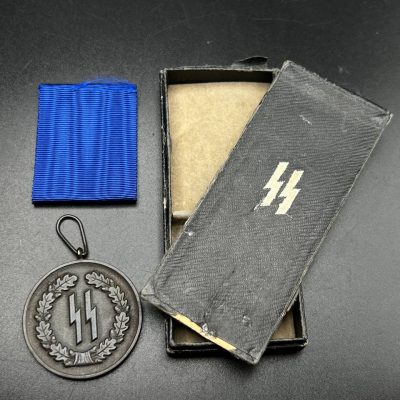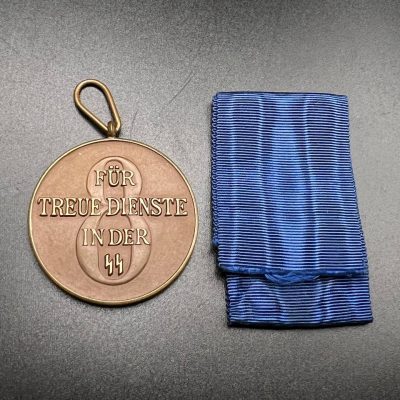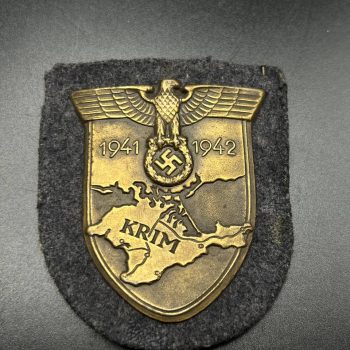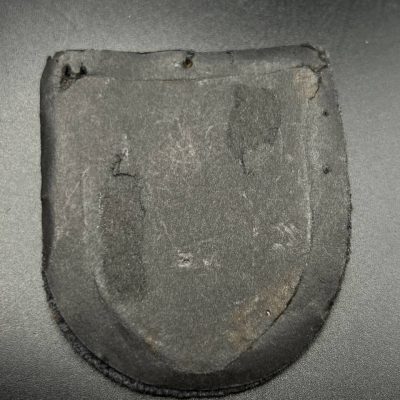ABOUT US
ALEX MARKETPLACE (Military Antiques Auction) – is a trading platform, where you can buy antique items from the period of the first and second world wars.
The auction lots are structured into a catalog with categories and filters that you can use to find the items you are interested in.
Each auction is a selection of military antiques, with limited time bidding opportunities. Registered users are allowed to bid.
Read about our guaranties: https://alexmp.com/guarantee/
Last auctions
-
Two-Place Medal Bar with Iron Cross 2nd Class and Eastern Front Medal. Maker Marks 100 and 88 (Lot: 576)
Starting bid: $ 575A two-place medal bar from the Third Reich period, fitted with the Iron Cross 2nd Class 1939 and the Eastern Front Medal 1941/42 (Ostmedaille). The bar features a metal back plate and neatly folded ribbons.
The suspension ring of the Iron Cross is marked “100”, identifying the maker as Rudolf Wächter, München. The ring of the Eastern Front Medal bears the mark “88”, corresponding to Gustav Brehmer, Markneukirchen.
Both decorations show honest age patina; the EK2 enamel remains excellent with no damage, and the Ostmedaille retains strong details. Ribbons are vivid and intact. A well-assembled and representative medal bar. -
SS Long Service Medal (4 Years), with original case and ribbon (Lot: 575)
Starting bid: $ 1,500An original SS Long Service Medal, awarded for four years of faithful service. The medal is struck in bronze with a dark finish, much of which remains intact. The obverse displays the SS runes surrounded by a finely detailed oak-leaf wreath.
The reverse bears the inscription FÜR TREUE DIENSTE IN DER SS, sharply executed with correct period lettering. The suspension loop is of proper wartime construction—separately made and neatly soldered.
This example comes complete with its original blue ribbon of correct weave and original black presentation case, featuring silver SS runes on the lid. The case shows expected age wear, with the interior insert preserved. Such complete sets are considerably scarcer than loose medals.
Overall condition is excellent: natural patina, crisp relief, and no signs of repair.
-
SS Long Service Medal, (8 Years), with ribbon (Lot: 574)
Starting bid: $ 1,300An original SS Long Service Medal, awarded for eight years of faithful service. The piece is struck in bronze with its characteristic matte brown finish. The obverse features a large swastika with a central SS rune wreath, rendered in detailed relief.
The reverse bears the inscription FÜR TREUE DIENSTE IN DER SS with sharp lettering and an even background. The suspension loop is correctly formed, separately made and soldered—fully consistent with authentic wartime production.
The medal comes with its original deep-blue ribbon of correct weave, well preserved with no fraying. Overall condition is very good, showing natural patina and crisp details without signs of cleaning or repair.
-
Crimea Shield (Krimschild) (Lot: 573)
Starting bid: $ 425An original 1941–1942 Crimea Shield (Krimschild), produced as a solid brass stamped badge with strong, well-defined relief. The eagle, dates, and Crimea map are crisp, with a natural aged patina and no signs of restoration. The bronze finish is partially retained, typical for worn period examples.
The shield is mounted on its correct dark-grey wool backing with internal cardboard stiffener, matching authentic wartime construction. The reverse shows period attachment marks, consistent with actual wear on the uniform. Overall condition is very good, with original materials fully intact.

